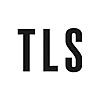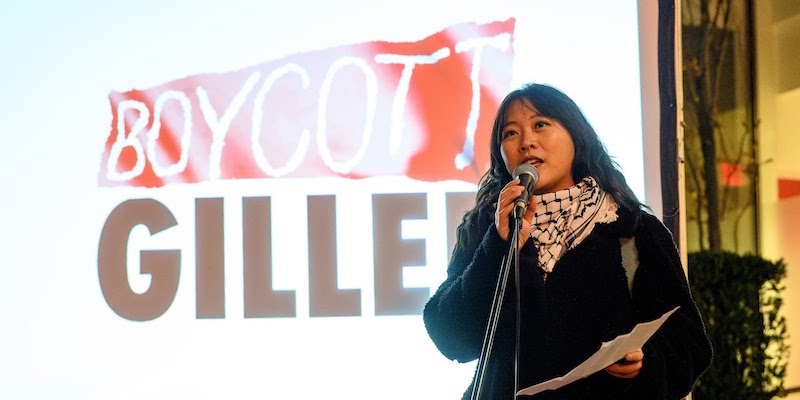A revolutionary who critiqued Marx; a Christian who refused baptism; a Jew who held Jewishness in contempt: Simone Weil was a creature of contradictions. For Adrienne Rich, Annie Dillard, Mary Gordon and the array of poets studied in Cynthia R. Wallace’s The Literary Afterlives of Simone Weil, Weil’s contraries analogize our own. Reading Weil, we meet someone caught within our conflicts and limitations; and someone who, somehow, transcends them. As a guide, an icon and an antagonist, she remains a saint, in Susan Sontag’s phrase, for a secular age.
Wallace is insightful about her subjects in part because she is clear-headed about theirs. They (and, by extension, we) write about images of Weil, not about Weil herself. An account of whom Weil has influenced, Wallace warns, is an examination of how she has been used. Rich, Dillard and Gordon use her in different ways. They do so, Wallace suggests, in service of at least one shared end: to navigate and traverse the shifting geographies of the “post-secular” world. Each such voyage charts a different course. An atheist, socialist and feminist, Rich admires Weil: she tried, Rich told a feminist contemporary, “to make some of the very connections we’ve been trying to make”. And pities her: she did not, Rich adds, succeed. When Weil writes of self-giving, she often means self- destruction, according to Rich; when she says God, she means herself. Dillard – sharing Weil’s “focus on religion and metaphysics” and a “reception bordering on hagiography” – takes her as a pathfinder through the borderlands of nature, mysticism and the writer’s craft. To Gordon, at once “obsessed” and disturbed” by Weil’s thought, she is an axle turned by history: both a warning of the dangers attendant on unconditional commitment and an affirmation that such commitments must be made.
Each encounters a different Weil. And Weil’s afterlives were many, Wallace notes. Her philosophical – and personal – cathexis of food, hunger, desire and the divine resounded with postwar feminists. Her struggles with Catholicism – convinced by experience, alienated by authority – prefigured our general, and gendered, spiritual unrest. Her insistence on attention harmonizes with a therapeutic culture, her self-fashioning with an individualistic ethic; her isolation matches the rhythms of a later, lonelier age.
Then the halo cracks. When Weil writes on Judaism, Wallace’s writers stumble on her words. Weil’s critique of Christianity – corrupted by wealth and power, posing exclusive and unjustifiable claims on truth – still resonates. Her attacks on Judaism repel. She abhorred the violence of the Old Testament: everything in it, she said, “is of a polluted and atrocious character”. In the God who commanded genocide she identified the first father of modern totalitarianisms: “Hitler”, she told one friend, “hunts upon the same ground as the Jews.” When Vichy France banned Jews from university teaching, Weil wrote to complain only that she was not a Jew.
Wallace’s subjects attempt to frame Weil’s antisemitism as an exception: a lacuna in her universal empathy, to be explained rather than understood; a psychological quirk, cultural inertia; a darkness (Gordon posits) impervious to interpretation. Wallace echoes one modern apologia: Weil lacked exposure to scholarly peers, who, sharing her concerns, reached different conclusions. But the same could be said of Weil’s eccentric reading of the classics: within her “Greek tradition”, Plato was crowned the “father of occidental mysticism”; Aristotle, by contrast, found no place at all. So too her account of medieval Languedoc as a fusion of ancient Egypt, the Athenian Golden Age and a repristinate – if suspiciously Weilian – Christianity of pacific, cultured humanism. So too the work these misreadings inspired. To excuse her errors is to excise her insights. Dismiss Weil’s idiosyncrasies and you dismiss Weil.
Recognize them, though, and Weil becomes unrecognizable. One exemplum: her disaffection with the Church and her attacks on Judaism are hard to disentwine. Her interpretation of Christianity was one systematically expurgated of Jewish influence. Athens displaced Jerusalem, with the Gospels reread as the “last and most marvellous account of Greek genius”, and Dionysus and Osiris recast as “in a certain sense, Christ Himself”. In Weil’s schema, radically Hellenistic and radically universalizing, non-Christian spiritualities have a place. Judaism – an exclusive revelation, for a people apart – has none. The exception is an aspect of the rule.
The Literary Afterlives of Simone Weil’s faults are those of the field; Wallace’s distinctive virtues are her own. Her best work – a deft balancing of biography, criticism, philosophy and a good eye for human frailty – exposes how the many Weils of literature are unlike Weil. Each assumes contemporaneity and coherence; each distorts. It is perhaps for this reason that, in Wallace’s words, it’s “the poets” who “invite us to see her life in its fullness, perhaps for the first time”: fragmented, paradoxical, unfinished.
Weil’s afterlives rarely match her life. The woman who preached attention to the suffering other fantasized about parachuting into France as her neighbours suffered in the London Blitz. The libertarian revolutionary proposed, in The Need for Roots (1949), a bleakly authoritarian future. The remorseless critic of dehumanization averted her eyes from the persecution of the Jews. This Weil was perverse, wilful, inconstant. Through the cracks in her image, in Cynthia R. Wallace’s telling, we see someone not unlike ourselves.
Madoc Cairns is an editor at Plough Quarterly and a freelance writer living in London
The post Cracks in the image appeared first on TLS.

 By Times Literary Supplement | Created at 2024-11-14 02:17:55 | Updated at 2024-11-23 21:15:02
1 week ago
By Times Literary Supplement | Created at 2024-11-14 02:17:55 | Updated at 2024-11-23 21:15:02
1 week ago








